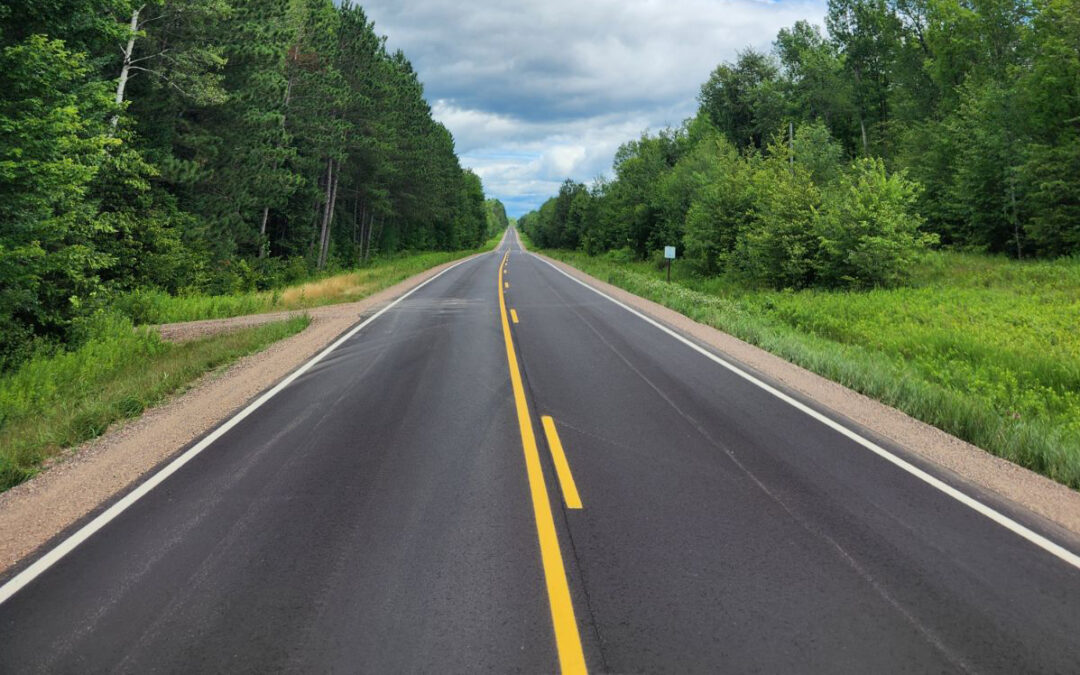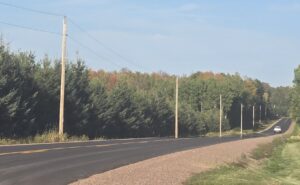The challenge?
County Highway (CTH) D is critical for the logging industry and tourism in the Chequamegon-Nicolet National Forest (CNNF). It is one of two county highways that connect STH 13 and STH 73 to the CNNF. Unfortunately, CTH D was experiencing rapid deterioration of its asphalt, with the existing pavement raveling in the wheel ruts. As a result, water pooled on the surface, increasing its aggregate base penetration and continuing the deterioration cycle. With this road’s heavy truck traffic volume, Taylor County needed to address the road’s condition. Like many Wisconsin rural counties, Taylor County’s budget struggles to keep up with inflation. The county funds its roads on a 44-year life cycle, but this 26-year-old road needed a major facelift.
How the “fix” benefits the economy and your community?
The forest industry is Taylor County’s top employer and is essential to the economic well-being of Taylor County. This CTH D pavement replacement project from CTH N to Forest Road (FR) 1529 adds to a long list of work to improve and strengthen access to forested lands. Taylor County has worked with the Forest Service to replace more than 17 culverts to help improve flood resilience and aquatic passage on critical forest roads in the CNNF. Many of these culverts improved access to forest stands, which are part of 14,500 acres to be harvested in Taylor County in the foreseeable future. CTH D provides direct access to roughly 11,500 of the acres. These improvements also have recreational value, including a new snowmobile trail connecting Taylor and Price Counties through the CNNF.
What made the investment possible, and what remains a hurdle?
Taylor County originally wanted to improve CTH D from CTH N to STH 73. When the county didn’t receive the necessary funds from the Federal Lands Access Program (FLAPP) Grant in 2022, they focused on improving the worst CTH D segment from CTH N to FR 1529. The county received $322,057 in state funding through the WisDOT Local Road Improvement Program (LRIP) for the $1.5 million project. The county paved an additional 1.29 miles of road with these state funds.
What’s next?
Taylor County hopes to get additional LRIP funds to help finish the pavement replacement project on CTH D to STH 73 in 2026. The county is dedicated to preserving the forest industry’s robust history. Over the last five years, the county has spent over $1 million on pavement preservation in and around the CNNF, and with a little more help, the county can further preserve it for decades to come.






